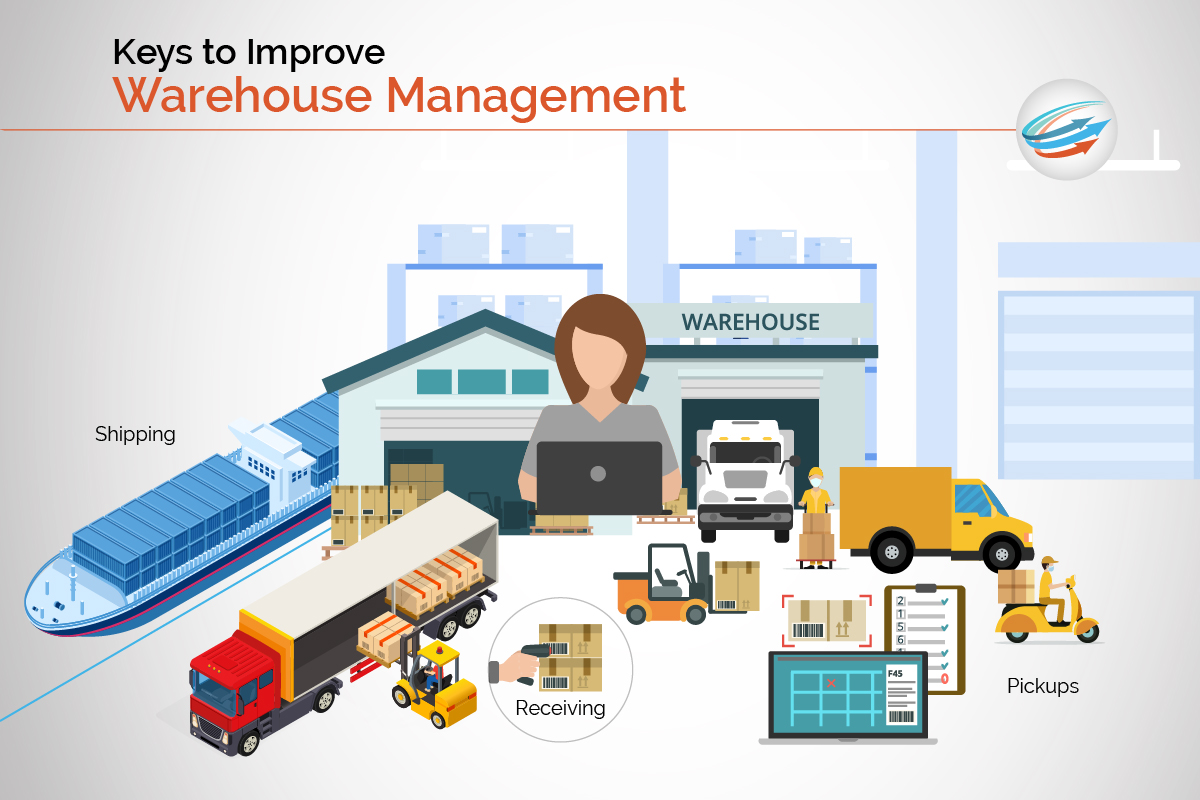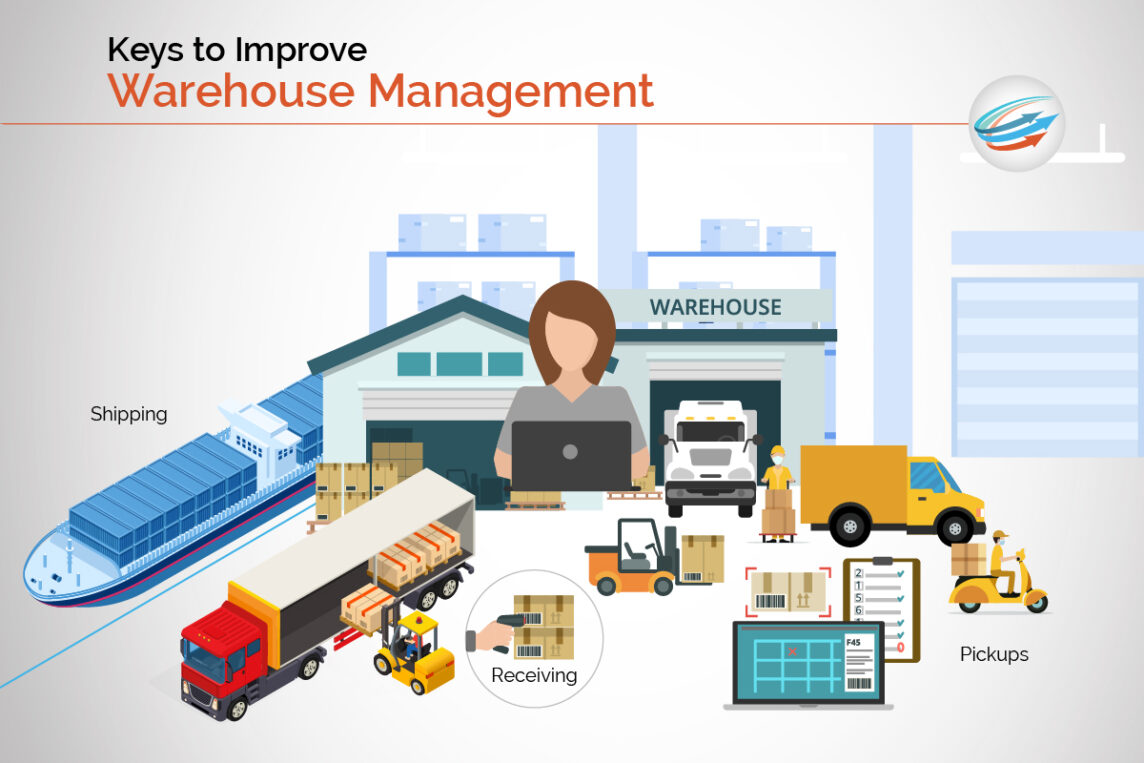
Warehouse managers have the difficult task of keeping track of all the materials in a warehouse, including where products are currently located and where they should be. You would think the advancement of software has made this job somewhat easier—and it has to some degree—but software advancement has also led to added responsibility.
What Is a Warehouse Management System?
Software that is able to process the day-to-day operations of a warehouse is considered a warehouse management system. Previously, these systems weren’t able to do much more than locate products within a warehouse—but warehouse management systems can now track a package for the duration of its movement from purchase to end user. Management systems should be able to process the associated transactions, including shipping, receiving, and pickups.
8 Tips to Improve Warehouse Management Process
Keep in mind that behind management technology are real people who are still responsible for the actual management. While the software has become a valuable tool in accommodating warehouse management, the human aspect still plays a vital role.
Below are some steps must be taken on a regular basis to ensure the warehouse operates at a premium level with minimal mistakes.
Keep the Warehouse Organized
An organized warehouse is a productive warehouse. If your facility is cluttered and cramped, it will be difficult to move product in and out efficiently. Work with your team to establish organization protocols and stick to them. This may involve color-coding certain areas, using specific types of shelving for certain products, and designating certain aisles for specific tasks.
Conduct Regular Audits
One of the most effective ways to ensure that operations stay at their peak performance is to conduct regular audits of existing systems and practices. Auditing helps make sure that materials are stored securely, proper labeling systems are in place, protocols regarding waste removal and safety measures are enacted, and all resources are properly allocated.
Reduce Inventory That Doesn’t Sell
Having too much inventory on-site ties up capital on items that are not moving, so take a look at what has been sitting in the warehouse for an extended period and consider writing it off or reducing its quantity. Additionally, you may want to take steps to prevent overstock in the future by having better visibility into sales trends and being flexible with orders or lead times.
Avoid Delays when Receiving Shipments
Setting a timeline for incoming orders to be processed and ensuring staff are trained in proper receiving procedures are key steps in avoiding delays that could potentially prohibit future orders from being fulfilled correctly and on time. Establishing an efficient supply chain process with coordination between vendors and warehouse managers is also vital to a successful delivery system.
Invest in Employee Training
Effective employee training can help to ensure that operations run smoothly and efficiently, with fewer mistakes being made along the way. It can also improve morale as employees feel empowered by the knowledge and resources they have had access to when training. Warehouse management processes should also involve creating a clear chain of command with outlined roles and responsibilities, so everyone is kept up to date.
Take Advantage of Technology
Technology can be used in a number of ways to increase the efficiency of your warehouse management process. Utilizing a warehouse management system can automate a number of tasks and keep track of inventory levels, allowing you to manage your warehouse more effectively. You can also use barcoding and RFID tags to keep track of products and locations within the warehouse, which can save time when searching for items.
Get Automated
Automation can help you save time and money, increase accuracy, process orders faster, and reduce errors along the way. Furthermore, automated reporting tools can provide powerful insights into any changes that need adjustments as well as enable forecasting of potential problems before they arise.
Consider a Fulfillment Center
Warehouse and fulfillment centers form an integral part of the logistic industry and integrate with the warehousing process. Fulfillment centers are designed with streamlined structures to make receiving orders, managing inventory, and dispatching shipments quick and efficient. Furthermore, managers have better control over activities while reducing time and labor costs.
Get in Touch with APS Fulfillment, Inc. for Your Warehouse Management Needs
You may look at this list and wonder how you can implement any of these changes—or you may feel like you already have a fair grip on the way your warehouse is currently managed. But the goal is not to be “fair” or feel afraid of change. APS Fulfillment, Inc. can find and execute warehouse solutions to take your fulfillment services to the next level.
We are based in Florida but offer shipping fulfillment for clients worldwide. If you require fulfillment services, contact us today.






